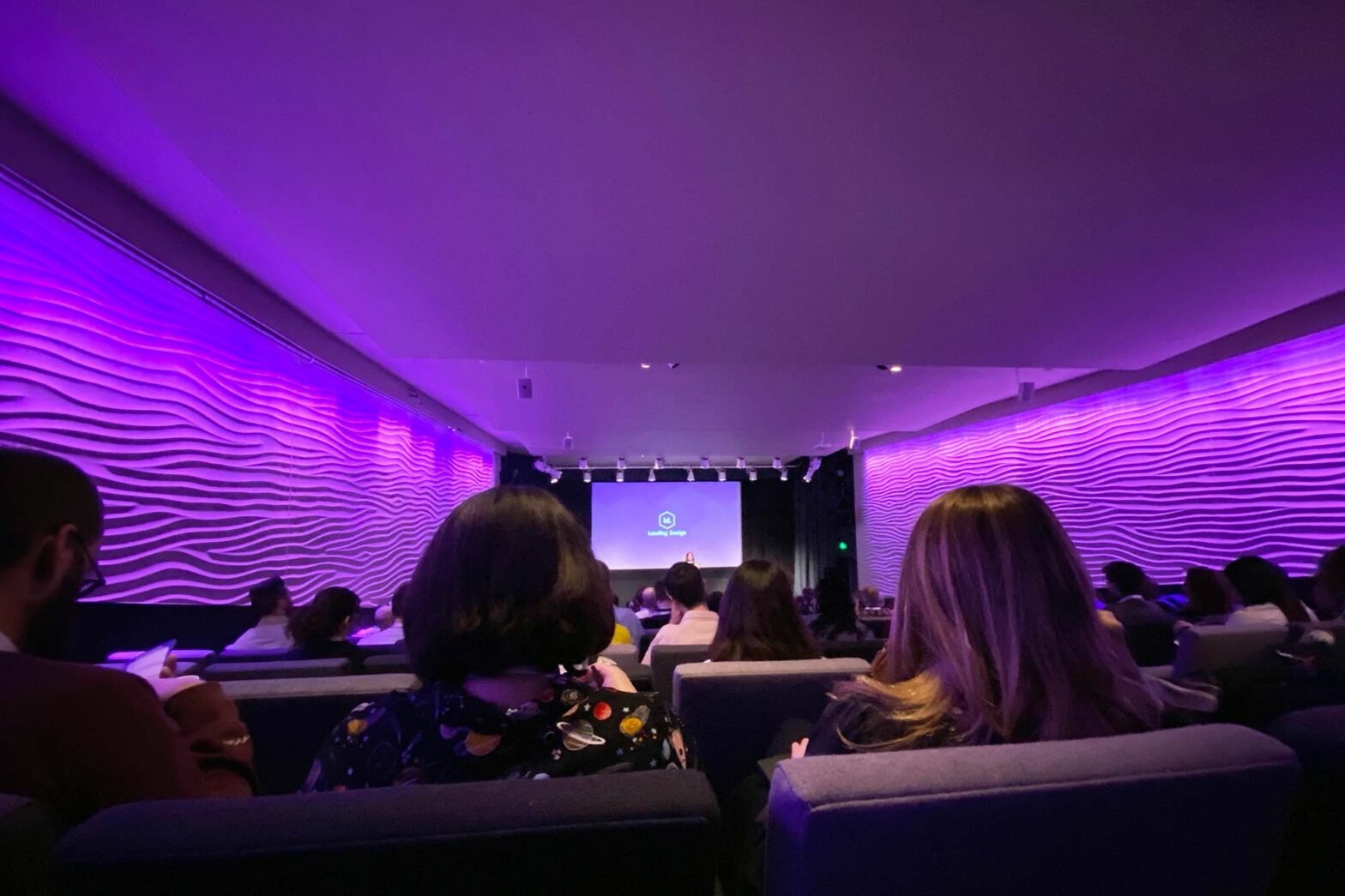Off to London. On Tuesday, I hopped on the train again to learn how to become a better design leader. Using my annual learning and development budget at the Digital Service, I attended the only conference that focuses explicitly on design leadership.
‘Leading Design’ in London’s Barbican Centre felt like an old-style conference format. One talk of 20 to 30 minutes followed the next – from morning to evening for two days. There were no interactive sessions or hands-on workshops and relatively little time for questions. That wasn’t necessarily bad, though; just nothing I’m used to anymore.
As a single-track conference, there was nothing you could miss, and there were no decisions to make. Just sit and listen. In between, there were plenty of breaks for exchange with fellow participants. Most of them were leading teams of designers in organisations of various sizes – from boutique consultancies to large-scale corporates. Attendees from public-sector organisations were in a small minority.
The Barbican Conservatory offered a unique green backdrop for long conversations over coffee, lunch, and afternoon drinks. More publicly recorded, I tried to tweet out the more noteworthy bits – as long as Twitter lasts and these tweets remain embedded.
Taking notes from other design leaders
Bumble’s Head of Product Design, Oliver Eliel, shared Julie Zhuo’s levels of leadership. I should revisit some sections of her book on making a manager, I guess.
JPMorgan’s Vice President of Design Ops Jose Coronado presented another angle to leadership approaches by naming 5 different styles and behaviours:
My former Nokia Berlin colleague Ray Ho, who is now leading design at the refurbished tech reseller Back Market, talked about positive tension, did an excursion into German philosophy and shared 4 tips with things he tries to apply:
The talk that got discussed and referenced the most was Alberta Soranzo’s: “A geography of time – why it matters when leading globally”. Having worked in different countries and cultures, she walked us through Erin Meyer’s cultural map (from the book of the same name, subtitle: “Breaking through the invisible boundaries of global business”). The book has been on my reading list, but so far, I didn’t get to it. Given the resonance in the room, that was the case for many – of whom many led diverse teams with people from many cultural backgrounds.
As Digital Service continues to diversify our teams and organisation, Meyer’s dimensions are helpful to keep in mind and look into further.
DuckDuckGo’s design director Holly Habstritt Gaal presented a little toolkit and suggested taking a – surprise – incremental and iterative approach to change processes:
The most left-field talk was Lisa Welchman’s, who has been writing on chaos, ethics and digital safety. She presented a timeline of car safety innovations and how long it took for them to become standards and then get written into policy. With it, she tried to remind and encourage us that things take some time after all-new technologies are developed. And that now is the time to make the internet a safe place, a task that is up to design and tech leaders.
Lego’s Head of Interaction Design discussed the importance of fun at work and how a fun climate helps solve complex problems. She also talked about everyone’s circle of influence and how it can grow and shrink depending on the surrounding energy.
One thing nagged me right after the first few talks and throughout the days. Many professional speakers and experienced designers needed help creating legible slides. They had low colour contrasts and used tiny fonts or other elements one could not. A related tweet got a little traction, and one of the speakers responded by apologising at the start of their presentation.
In the context of what I wrote last week, the leadership activity diagram from Jason Mesut and Martina Hodges-Schell was a strong reminder that there are indeed plenty of things to do. But I cannot do them all or all at once. Even though, I have used a similar model with the Uk government’s heads of designs last year, I had my little ‘of course!’ moment.
It will be handy to use this in our weekly discipline session where we, as heads of design, engineering and product, come together to discuss overlapping topics. At the end of my probation period, I could also use it to ask for feedback on where I should shift my efforts.
Overall, ‘Leading Design’ was a flawlessly executed conference, and the format worked well. Maybe most design leaders don’t want to workshop. Some more moderated interactive sessions could have been helpful for focussed exchange, though. It’s always hard to tell if an expensive conference is worth its money, but I heard, discussed and thought about things relevant to my daily work that otherwise would not have come up.
It was also good to catch up with some former colleagues and compare notes. I also met with the RCA’s Nicolás Rebolledo and gave him an overview of GDS and the UK government’s building blocks for digital government and service transformation. Having Jan’s recording from 2020 was handy in this context.
I am curious to see if any good hybrid conferences will emerge or if there will be a range of in-person and another range of remote events in the future.
What’s next
This week, I interviewed several people for design and user research positions. I will continue next week and hope we’ll be able to close them soon, as hiring a great person for the first senior user research remains a priority.
After running a second accessibility ambassador kick-off session on Monday, Nadine and I will recap them and plan the next steps to keep and increase momentum.

